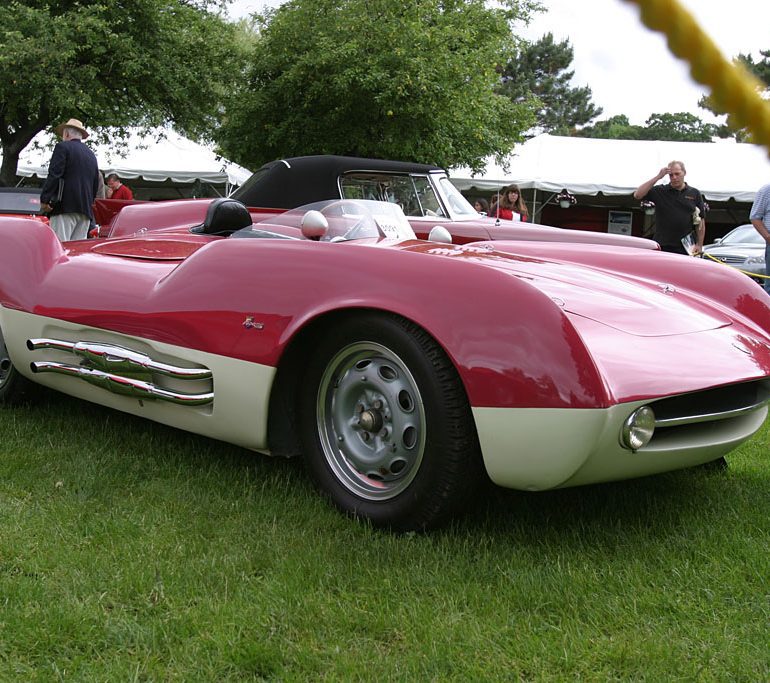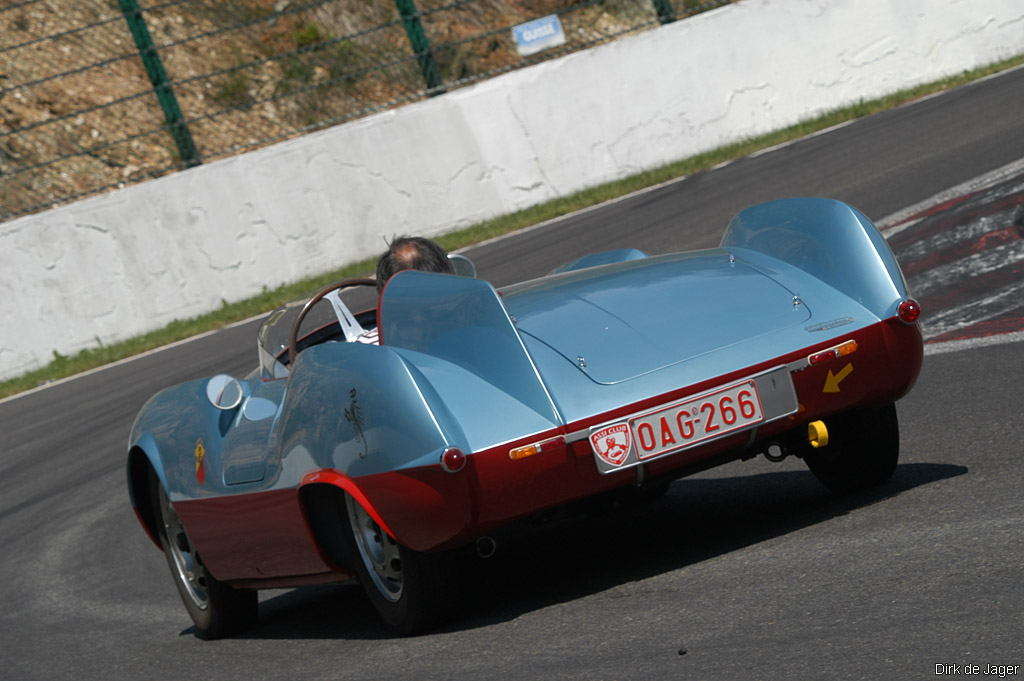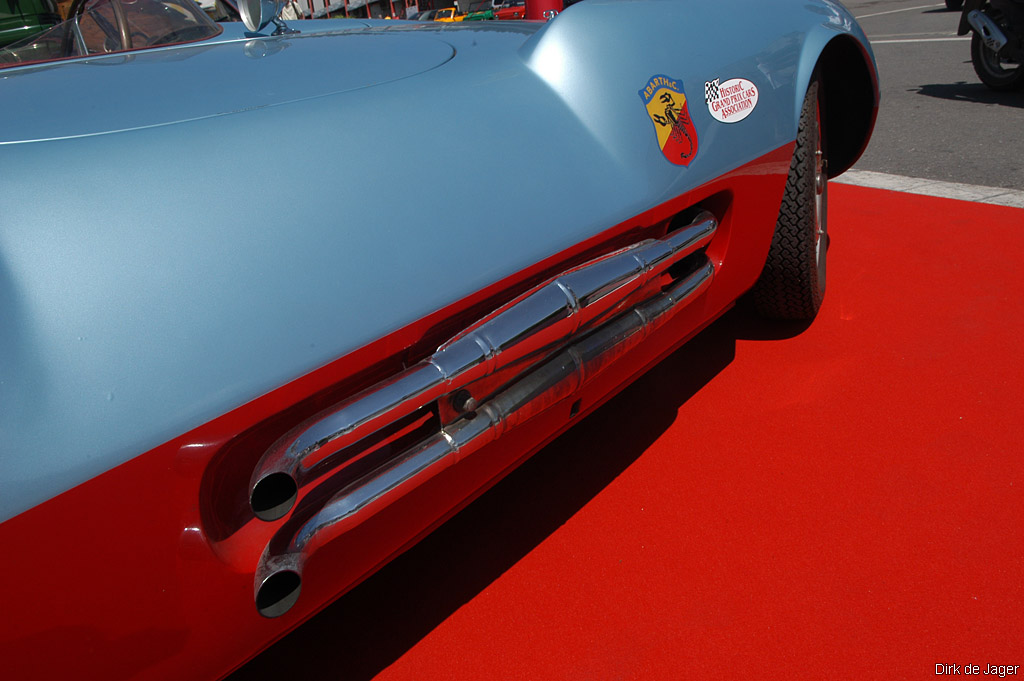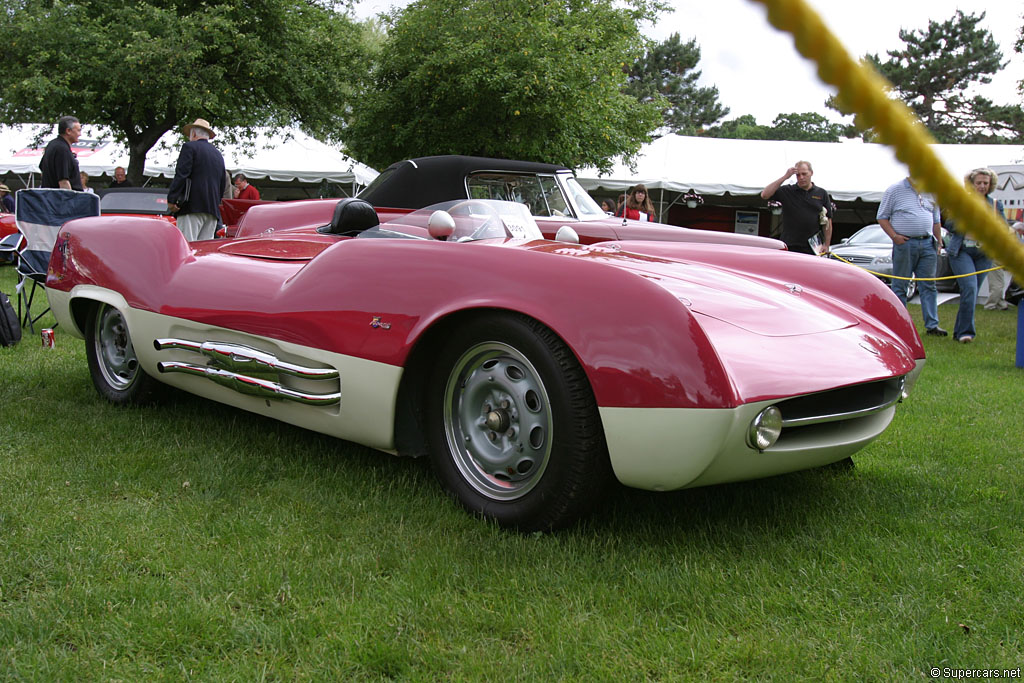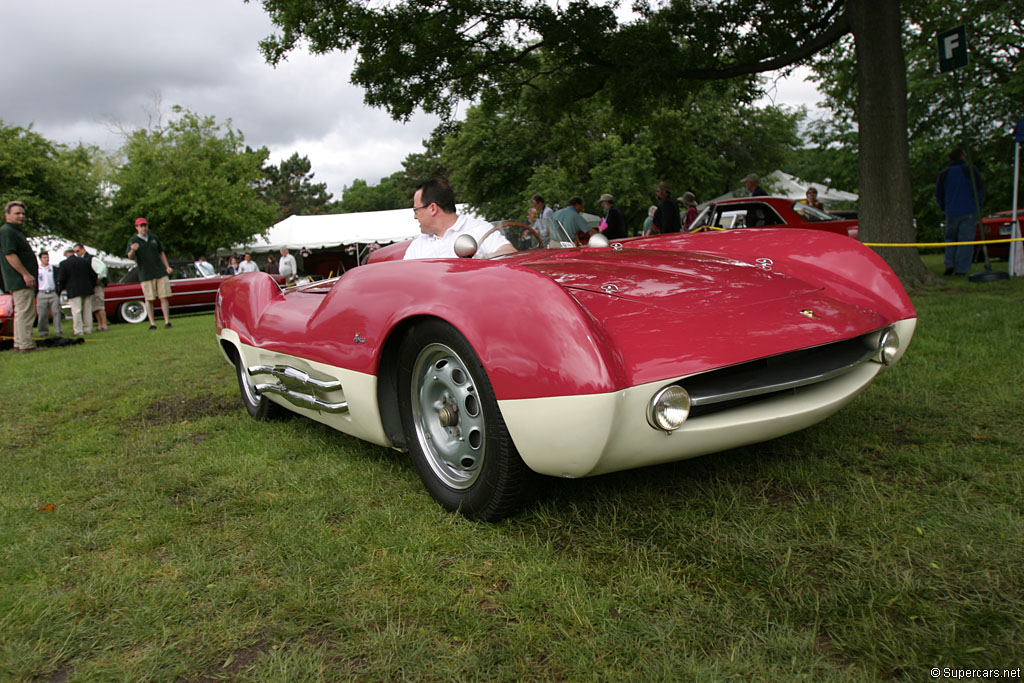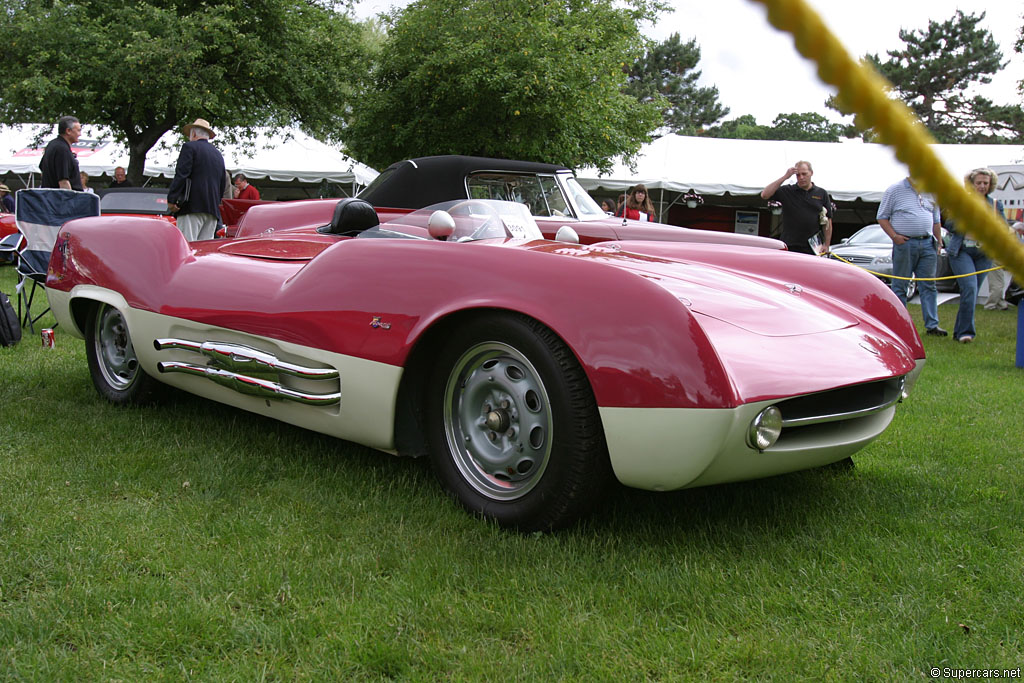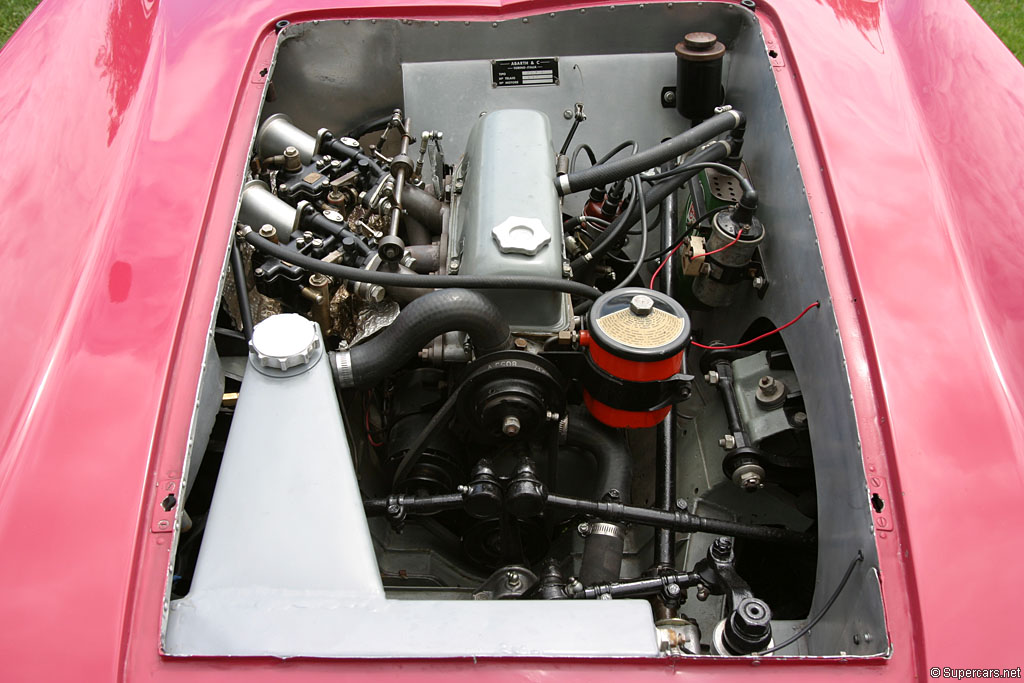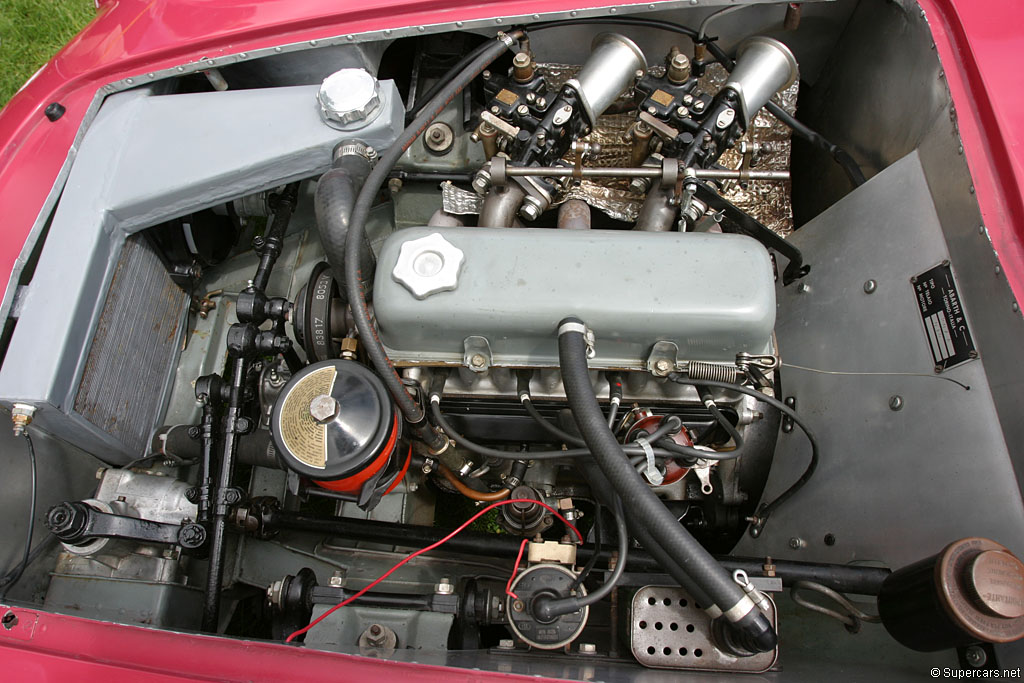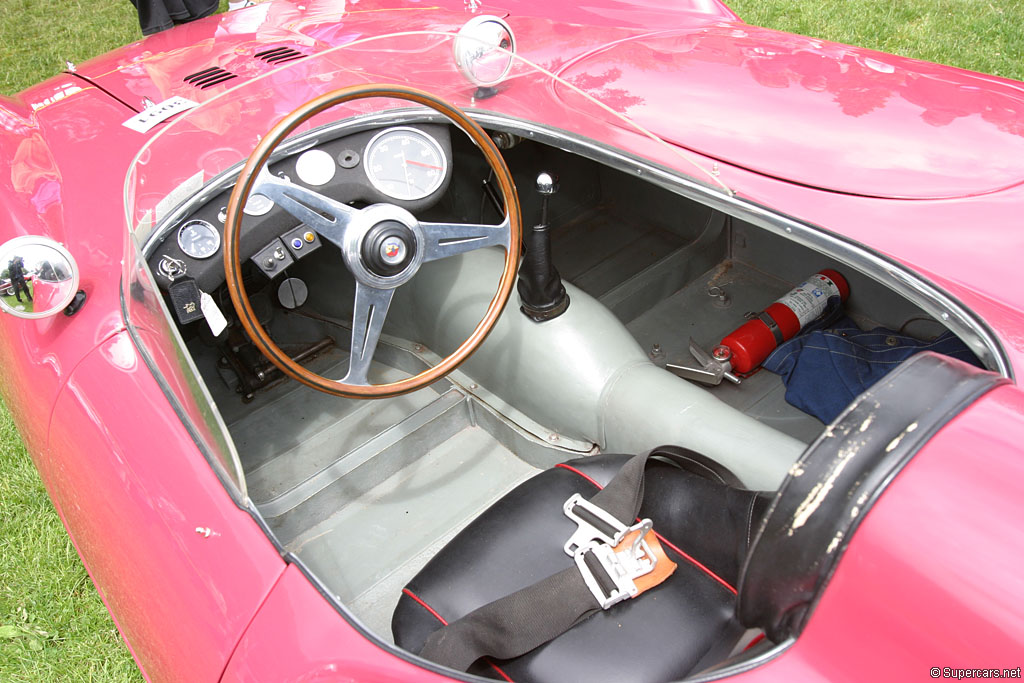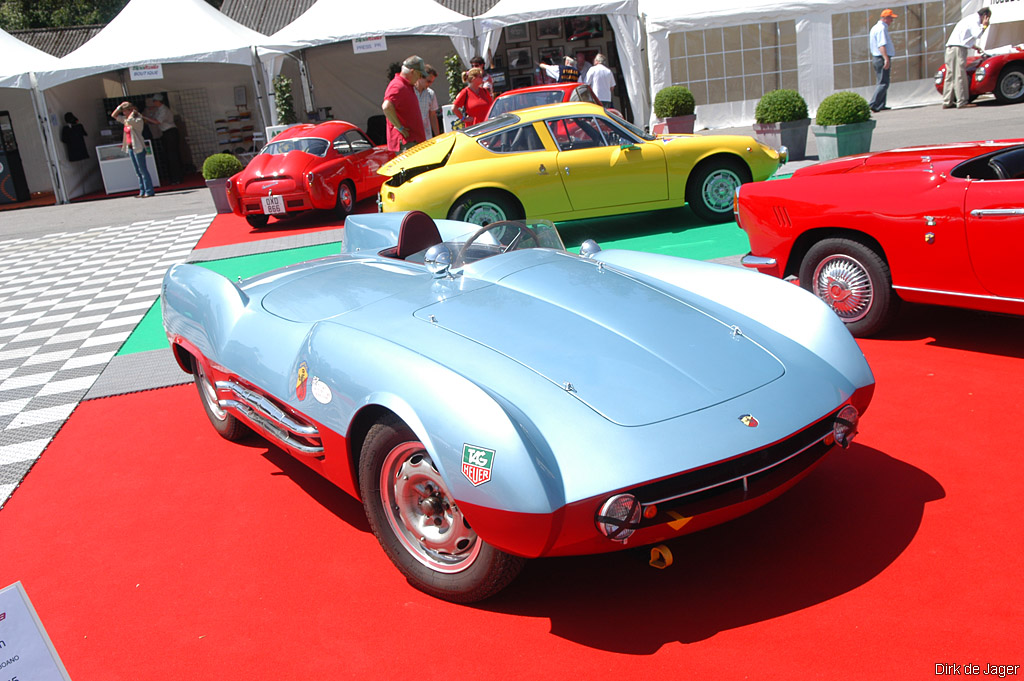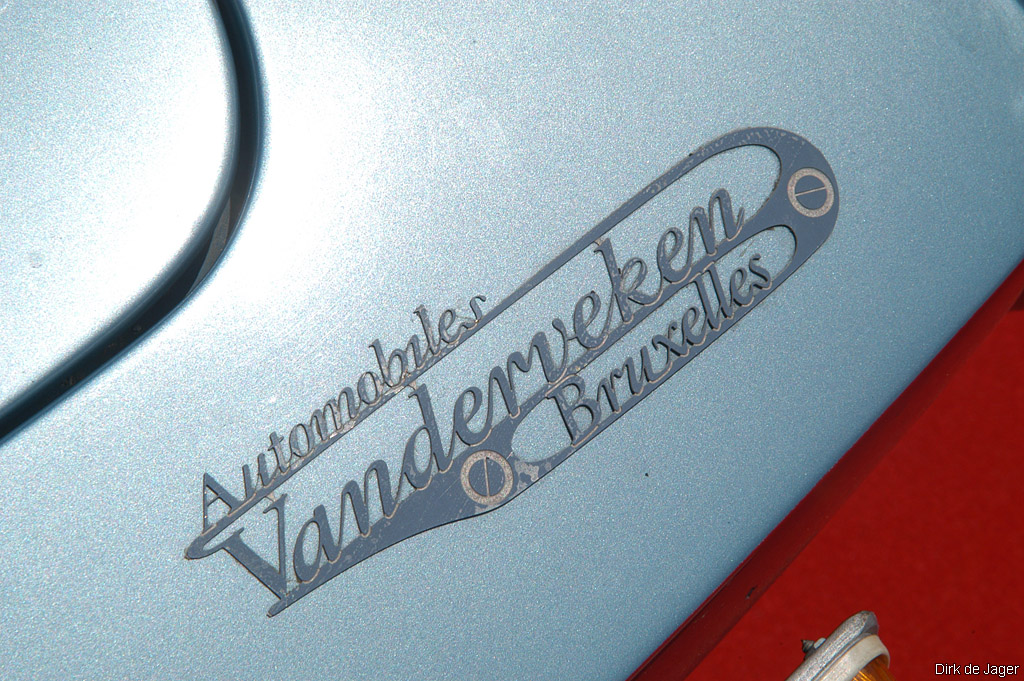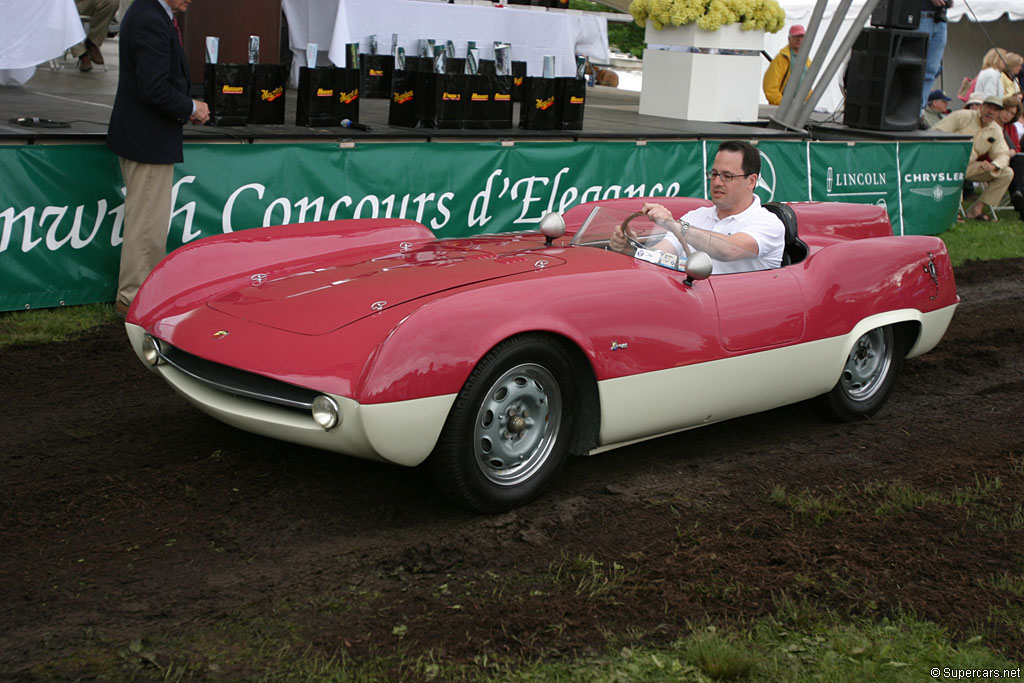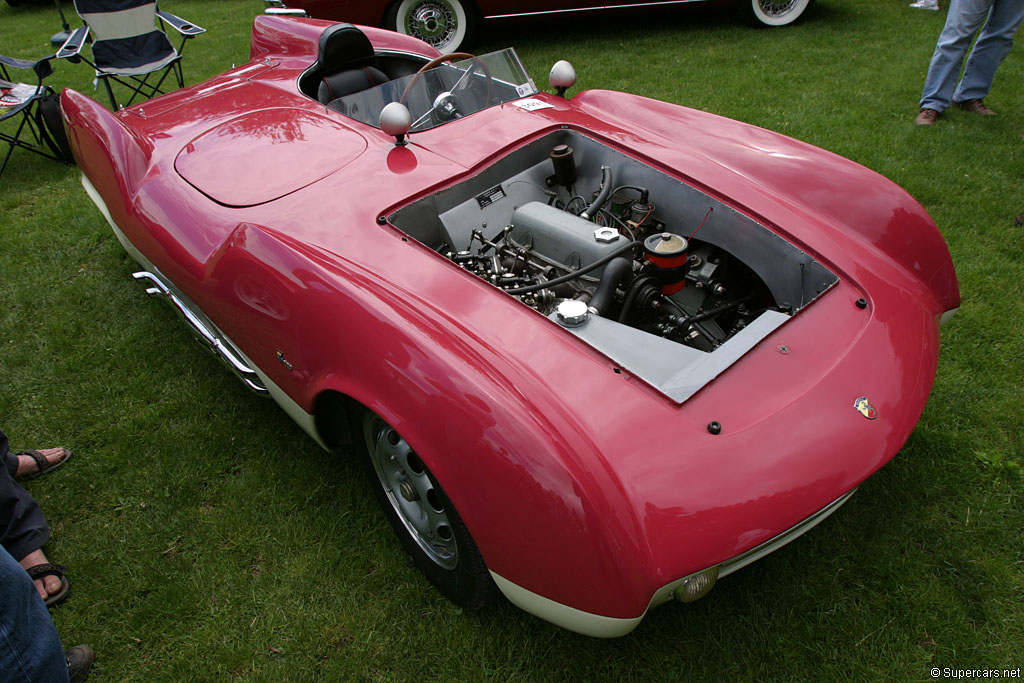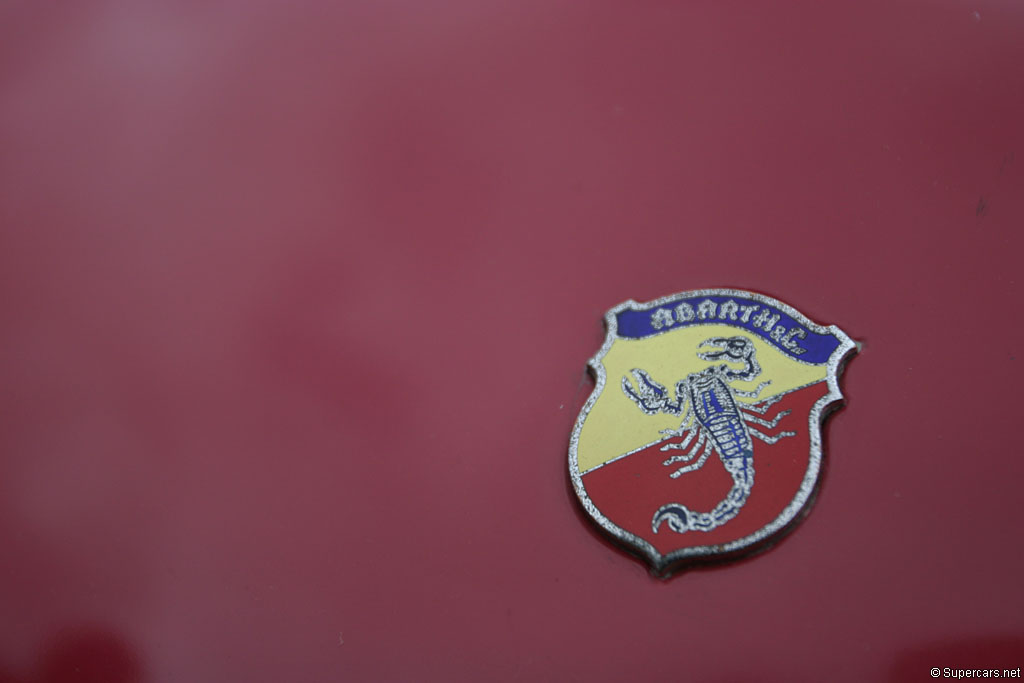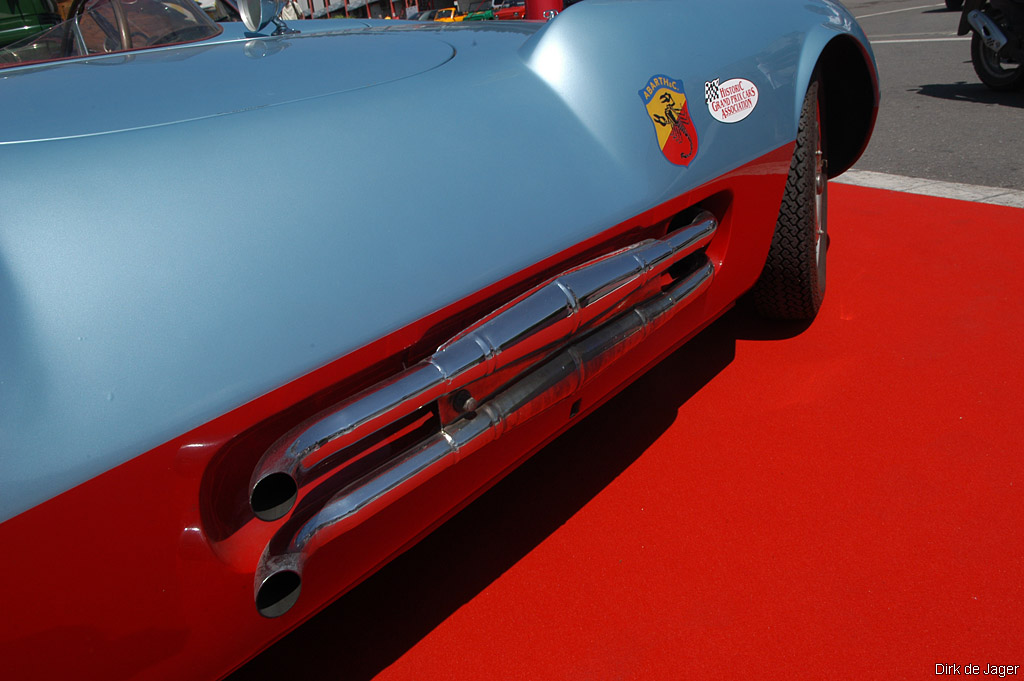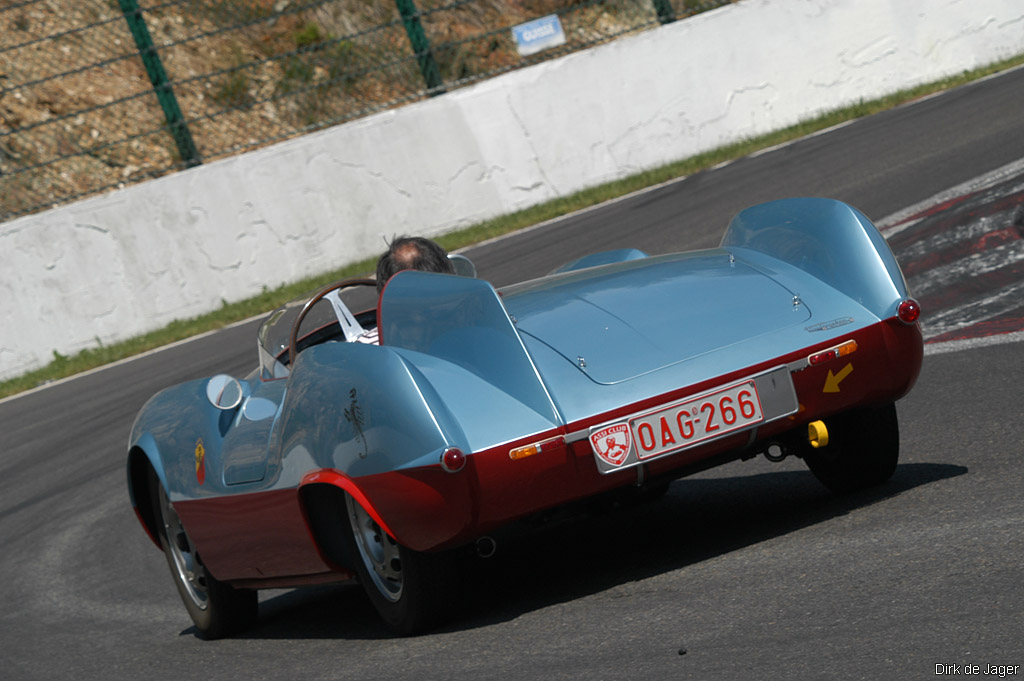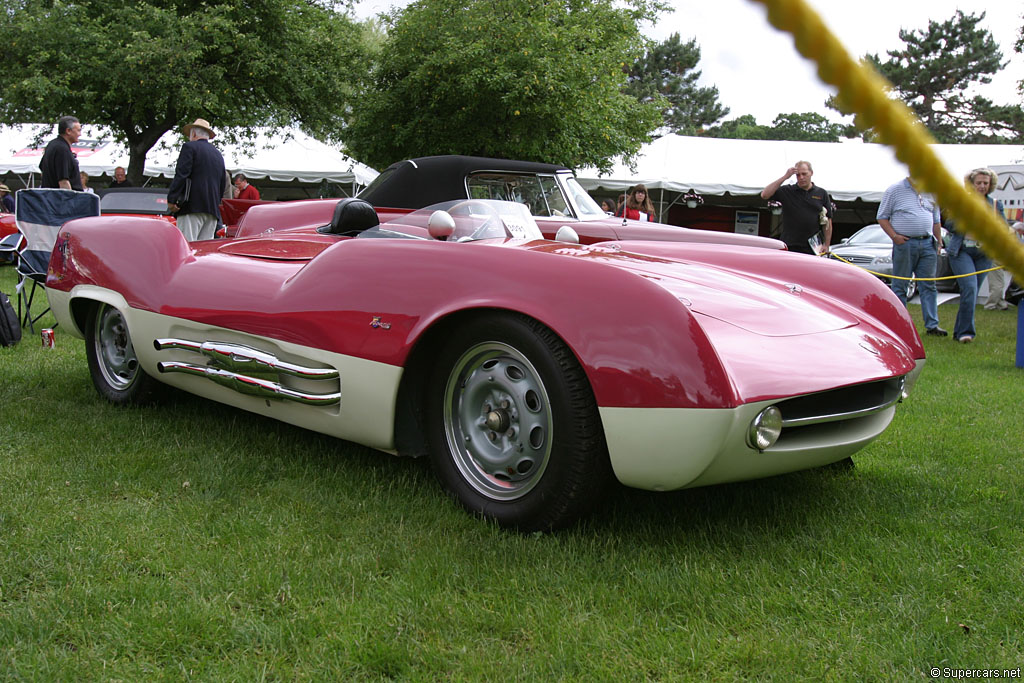1955 Abarth 207 A
Designed for the export market, the Abarth 207 A Spider was purpose built as a small displacement roadster. It took advantage of the popular Fiat 1100 by using its engine, but in a distinct sports racing car chassis. Carlos Abarth was no stranger to this platform. His tuning kits for the Fiat popular and funding more exciting projects.
The 207 was built during Abarth’s infancy and was the company’s first series production race car. It was built around a unique boxed steel chassis that borrowed some elements from the Fiat 1100. The highlight was a Fiat engine which had an increased compression ratio and intake manifold to produce 66 bhp—30 bhp over the original.
On top of this chassis, Mario Boano designed a unique, low slung spider body which had a distinctive side mounted exhaust and protruding fender creases. The driver was given a narrow Plexiglas windscreen and a rear tail fin. The signature stainless exhaust exemplified the quality of Abarth’s exhaust kits.
The first 207 was previewed in early in 1955 when Abarth announced that they were building cars for America and would make an appearance at the Sebring 12 hours. They later officially showed the car at the Turin Motor Show alongside a unique 208 A roadster with a full width windscreen and 209 A coupe.
Chassis 001 appeared at Sebring in the hands of journalist John Bentley. Both the faster Lotus 9s dropped out leaving Abarth with the class lead. Near the end of the race a unscheduled fuel stop was necessary and disqualified the 207 A from its only possible victory.
Although elegant, the 207 A wasn’t good enough to achieve any major success. It faced the much lighter Lotus 9 and Lotus 11 on the track and was often criticized for its heavy chassis.
Beyond the 207 A, Abarth went on the tune the Fiat 500 and other Zagato-bodied cars with great success.
1955 Abarth 207 A Gallery
In Detail
| type | Racing Car |
| built at | Turin, Italy |
| body stylist | Mario Boano |
| coachbuilder | Carrozzeria Boano |
| production | 10 |
| engine | Abarth-Tuned Fiat Inline-4 w.Dry Sump Pubrication |
| position | Front Longitudinal |
| aspiration | Natural |
| valvetrain | Pushrod OHV, 2 Valves per Cyl |
| fuel feed | 2 Twin-Choke Weber 36DC04 |
| displacement | 1089 cc / 66.5 in³ |
| bore | 68 mm / 2.68 in |
| stroke | 75 mm / 2.95 in |
| compression | 9.4:1 |
| power | 49.2 kw / 66 bhp @ 6000 rpm |
| specific output | 60.61 bhp per litre |
| bhp/weight | 126.44 bhp per tonne |
| body / frame | Aluminum Body over Box Steel Chassis |
| driven wheels | RWD |
| front tires | 5.20×14 |
| rear tires | 5.20×14 |
| front brakes | Drums |
| rear brakes | Drums |
| steering | Worm & Roller |
| f suspension | Trailing Arms w/Coil Springs, Hydraulic Shocks, Anti-Roll Bar |
| r suspension | Live Axle w/Coil Springs, Hydraulic Shocks, Anti-Roll Bar |
| curb weight | 522 kg / 1151 lbs |
| wheelbase | 2050 mm / 80.7 in |
| front track | 1229 mm / 48.4 in |
| rear track | 1212 mm / 47.7 in |
| length | 3620 mm / 142.5 in |
| width | 1550 mm / 61.0 in |
| height | 940 mm / 37.0 in |
| transmission | 4-Speed Manual |
| final drive | 4.30:1 |
| top speed | ~165 kph / 102.5 mph |
| fuel capacity | 32 litres or 8.45 gal. |


